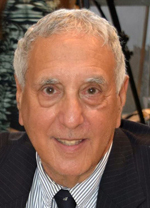By Donald H. Harrison

SAN DIEGO –The Matt Tyrnauer documentary Studio 54 tells of the meteoric rise of two Jewish business partners, their spectacular fall, and their efforts to reclaim their lives, one successfully, the other cut short by AIDS.
Their names: Steve Rubell and Ian Shrager. They met at Syracuse University. Rubell was extroverted and gay. Shrager was introverted and straight. When Rubell started a stereo enterprise, Shrager served as his lawyer, keeping creditors at bay. Later, Rubell wanted to own a nightclub, so he made the nightclub scene in Manhattan, trying to understand what were the necessary ingredients for success. He and Shrager found a building that once had been an opera house, and more recently was used as a television studio for such programs as What’s My Line, the 64,000 Question, and Captain Kangaroo.
Over six weeks, they transformed the rundown studio into a magical kingdom. They brought in Tony Award winning lighting designers. They removed the seats from the floor of the opera house, transforming it into a dance pit within which anything could happen. A floor show might wend its way through, or special effect lighting might emphasize the performers Disco beat. Theater sets were periodically built to enhance the feeling that Studio 54 was a world apart.
Couples could steal away from the dance floor to the balcony above, where sexual activity abounded. There were also mattresses down in the basement. Cocaine was sniffed freely, Quaaludes enhanced the euphoria, and among the gay and straight, multi-racial dancers, gyrating to the music side by side, there often would be some celebrities on any given night—big names like Elizabeth Taylor, Bianca Jagger, Calvin Klein, Diana Ross, Michael Jackson, Lisa Minnelli, Truman Capote, Elton John, Farah Fawcett – whose presence at the club Rubell and Shrager shrewdly publicized, building even more momentum for the club.
Over the 33 months of Studio 54’s heyday, everyone, it seemed, wanted admittance; big lines formed outside the nightclub. Not everyone could get in, so security guards working the ropes tried to pick people who looked cool. They disdained the “bridge and tunnel crowd,” that is people who commuted into New York City from elsewhere. Manhattanites were cool; other people not so much. The security guards also turned up their noses at people wearing polyester. This caused a lot of resentment among the people who were turned away.
Lots of booze, lots of drugs, and lots of money came into the nightclub; too much, in retrospect. New York State authorities prosecuted Shrager and Rubell for operating the club without a proper liquor license. The Internal Revenue Service in a raid found stacks of unreported cash. The partners were accused and convicted of depriving the U.S. government of $400,000 in taxes. They were sent to prison.
While in prison, Shrager and Rubell were asked by federal agents to tell them where to look for abuses among their competitors. Shrager’s father, Louis, had been known by the mob as “Max the Jew,” and was an associate of Meyer Lansky. There was never any evidence that the son was associated with the mob, but after cooperating with federal authorities, Ian Shrager felt terrible. He had broken the code of silence.
Cooperating got the men out of prison early, but they returned to a different world. Instead of Jimmy Carter, Ronald Reagan was now in the White House. The age of permissiveness was over. So was the age of Disco. Three years after their release the partners opened another nightclub, the Palladium, but it was nowhere near the success of Studio 54.
Before Rubell died of AIDS in 1989 at the age of 45, the partners tentatively developed another avenue to success. They invested in a pair of boutique hotels. After Rubell’s death, Shrager continued on course, eventually investing in as many as 40 boutique hotels. Some began to call him the “Steve Jobs of the hospitality industry.” Eventually, Sharager was pardoned by President Barack Obama.
Shrager submitted himself to tell-all questioning in the documentary. As a result, the film is a candid retelling of a remarkable blip in American social history. Scheduled for release the week of Nov. 12th, it is well worth seeing.
*
Harrison is the editor of San Diego Jewish World. He may be contacted via donald.harrison@sdjewishworld.com